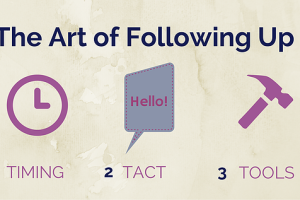There are many strategies out there on how to trump your competitors in a sale conversation. As this is something I’ve been studying and testing for a while, I’d like to share my insights. Even if it doesn’t get you to change your current practices, I am sure that some of the issues will make you revisit what you thought you know about being a successful salesman.
1. Prepare meticulously. Get everything you can about the decision makers. Use sales enablement tools to tell you which content on your website the prospects visited and in which aspects of the product they were interested the most.
2. Plan your questions carefully. Instead of you vying to explain the benefits or your product, ask the prospect what benefits they are looking for. Guide the conversation and have them tell you how to sell them the product. Turning the sales conversation into a consultation about your prospect’s needs and wants is bound to generate more success than any of the previous sales tactics you used.
3. Use NLP. Ask and listen what they have to say about their needs, wants and goals carefully. Next, check if you understood them by reiterating what they said. Ask them if you got it right. Make affirmative statements, so that you get a ‘yes’ as a reply to each. Next, present your product as the solution to their business problem explaining its benefits and using the language similar to the one they used.
4. Address unknown needs. What most sales reps do after researching about the client is to base the sales conversation around the known prospect’s needs. However, bear in mind that other competitors were probably going down the same road and have maybe even ended up on the same web pages. This means that they will probably find the same needs and come up with the similar arguments on how their product solves these needs. To avoid the status quo, dig deeper than them. Corporate Visions’ research found that timing is everything: starting the conversation with unconsidered needs is more effective than introducing stated needs first.
5. Set up your credibility. If a certain sales related topic about which you know a lot comes up during the conversation, make sure to mention your previous experiences in this field which will set up your credibility for everything you say next. For example, if an issue related to buyer behavior or new buyer trend emerges, include your expertise in the conversation before stating your opinion. But do it in a modest way — do not seem like a pompous bastard.
6. Exercise critical data analysis. Statistics and reports are a great sales tool for bringing up your point if one can use them properly; the problem is that most sales reps end up drily regurgitating data without giving them a deeper analysis or explaining to prospects just how much they are related to their case. Try to deeply reflect on the insights found in the reports and suggest their deeper implications. Be original and unique enough to make your proposition stand out from that of the competitors.
7. Be a visionary. SiriusDecisions study reveals that key decision-makers prefer discussions about business trends four times more than sales conversations that revolve solely around the product. High-ranking executives prefer visionary conversations which move away from discussing the current company’s benefits from the product to how it refers to company’s broader business issues and far-reaching business results. In short, focus on the bigger picture, not just your product.
8. Keep it simple. Don’t waste the precious opportunity to grab the prospects’ attention by getting into too many details too early. Explain to your prospect what your product can do to help them but don’t go into the technical how right away. It’s better to wait for them to ask you –this will show that they are interested in the product.
9. Take a non-traditional salesman approach. Being a good salesman is not about talking fast and putting pressure on prospects. It’s about presenting ideas in a different, original way, which will make your presentation stand apart from those of competitors. Good salesmen are people with a fresh and alternative sales approach who treat prospects as people. They use proper body language — warm voice, honest smile, intelligent comment, and unrehearsed jokes.
10. Think like your prospects. Put yourself in their shoes. Remember that no one likes to be sold, but nearly everyone likes to buy. So, try to get at their reasons for buying, not yours.
11. Don’t be too pushy. The best way to see what the client needs is by asking questions and actually listening to the answer all the way, and not just using them as an intro to start pitching your product. “Best salesmen are those who talk with the client, not at them. A mistake many sales reps make is not knowing when to stop pitching and when to listen instead. Even if the prospect doesn’t seem much interested in buying at that moment, they might turn to you in the future when the need arises – provided that your presentation was not that of a pushy salesman whom nobody wants to see ever again.
12. Postpone mentioning the price. Postpone discussing the price until you explain the value your product provides; otherwise, anything they hear from you after the price will be affected by that price. Bear in mind that the suitability of your product price depends on the value that prospects think they are receiving — it is your job to make sure they understand how big that value is.
13. Have your prospects close the sale instead of you. If you’ve done a good job with your questions, the prospect will know why they want your product, why it is different from the competitors and how important it is that they make a decision right away. Basically, the aim is to have the prospect close the sale for you.









Speak Your Mind